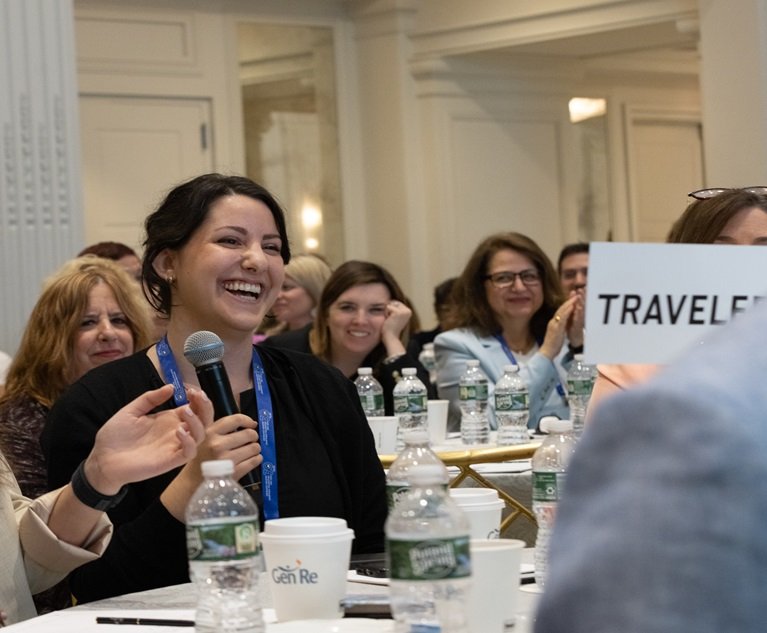As the nation nervously looked on, the massive storm surgecaused by Hurricane Gustav topped--but did not breach--the weakenedNew Orleans levee system last year. That was a huge relief not onlyto owners of homes and businesses in the area and their insurers,but to one specialty underwriter on the hook for an unusual relatedrisk as well--the professional liability of architects andengineers in charge of fortifying the protective walls.
|Mark Henderson, vice president of Markel Shand Inc., watchedwith concern for the safety of those in New Orleans, but also assomeone with skin in the game--an underwriter insuring architectsand engineers who have been rebuilding the levees that rupturedduring Hurricane Katrina in 2005, flooding The Big Easy.
|While the repairs to the levees are incomplete--and thus thefirms insured by Markel might not have been legally liable even hadthe levees failed during Gustav--Mr. Henderson said anothercatastrophic flood inundating New Orleans would have been soproblematic from a claims standpoint that the company and itspolicyholders might have decided they had to tender the policylimit.
|And so Mr. Henderson had good reason to exhale an extra sigh ofrelief when the levees in fact held during Gustav.
|Mr. Henderson said that after Hurricane Katrina struck the GulfCoast, many standard insurers and even E&S carriers werereluctant to write anything that had to do with the New Orleanslevee system.
|But he said Markel has now written professional liabilitycoverage for architects and engineering firms that have beeninvolved in designing repairs of the levees for two years. "I thinkwe were the only ones that quoted it," Mr. Henderson added.
|He noted that sometimes writing risks just after there have beenproblems can work in a carrier's favor, since the underwriter knowsthere will be significant energy invested in fixing what wentwrong.
|In the case of the levee system, Markel was satisfied with thetop-notch expertise of the consortium of firms involved in therebuilding. The Army Corp of Engineers is also overseeing theproject, and Mr. Henderson said that Markel made sure it wasreceiving premium relative to the high risks involved.
|The company, he said, felt that the odds of everything thatwould have to happen to cause a loss were very small indeed.
|Those odds, though, seemed a bit larger when news organizationswere broadcasting video of wind-driven water crashing into thelevees during Gustav. "It's a nervous time for underwriters whenany impending weather situation is even brewing, much less when youget to the point where actual water is shown on TV going over thetops of the levees," said Mr. Henderson. "At that time, you canreally just hope for the best."
|As for the progress being made on the repairs to the leveesystem, Mr. Henderson said he recently read an article passed alongto him by the wholesaler on the risk, reporting that repairs areahead of schedule and going well.
|For excess and surplus lines carriers and their wholesale andretail brokerage representatives, insuring firms that repair theNew Orleans levee system is but one among many unusual riskscrossing their desks.
|Some, such as insuring unique recreational aircraft, involveinherent risks that make them obvious prospects for specialtyplayers in the E&S markets.
|Others, such as insuring goats hired to graze in fields for thepurposes of trimming the area and removing weeds, are seen asrelatively safe bets but simply outside of the underwriting realmand comfort zones of standard companies.
|Chris Behymer, vice president of marketing at Markel SouthwestUnderwriters, spoke of some risks that fall into the lattercategory.
|One was a camp that, in many respects, operated similarly to anyother facility that would probably find coverage in the standardmarket, offering a variety of ordinary, low-risk activities, suchas boating, bingo and movie nights.
|There was an additional twist, however--as this was a nudistcamp, which made it an unknown risk for standard carriers, and soit ended up being placed in the E&S market.
|Mr. Behymer said that, from Markel's perspective, there was noreal problem underwriting the exposure--so to speak. Indeed, hesaid it was not much different than for a regular camp.
|"I think some [standard carriers], their underwriting appetiteis pretty well controlled," according to Mr. Behymer. "In our mind,it's just like a regular camp."
|He added that "of course, you hear the jokes about, 'Well, I'llhave to go out and do the inspection.'"
|Not able to resist a joke of his own, Mr. Behymer said, "Wedidn't really see much of a problem [underwriting the nudist camprisk], and we certainly wouldn't want the insured to go bare,without any insurance."
|Another risk that Mr. Behymer said is relatively safe but uniqueenough to end up in the E&S market involved a man who ownedgoats that would be hired by others to fix up fields.
|Mr. Behymer said customers would call the insured, and he wouldbring his goats to the field and let them graze there for a day ortwo. The goats would trim the field and eat unwanted weeds aswell.
|While Mr. Behymer said he does not see a lot of significant riskfor this business, he did discuss some potential losses that couldoccur. A goat biting a person was one possible exposure mentioned,in addition to a stray goat causing a vehicular accident.
|Sticking to the animal theme that has dominated previous NUarticles on unusual risks and claims, Mr. Behymer said he had seenan account years ago that involved cattle. One of the cows walkedin front of a truck, and the vehicle was damaged. Mr. Behymerspeculated that a similar event could occur with the goats. He saidovergrazing might also cause a loss, where the goats could possiblyeat plants over a property line.
|In general, though, Mr. Behymer said the working goats representa relatively benign risk that standard companies avoid essentiallybecause it is different from exposures they are used to.
|Another unique risk that is clearly the domain of E&Scarriers is liability and physical damage coverage on arecreational aircraft--called a "powered parachute."
|Chris Zoidis, associate vice president of wholesaler Burns &Wilcox and director of SRD-International, said such vehicles aresimilar to an ultralight aircraft--which, he noted, is "like a minigo-kart--there's not much more than a seat, and it has wings acrossthe top, and it's really powered by a small propeller in theback."
|Ultralights, he said, are classified as a type of aircraft. Buta powered parachute, Mr. Zoidis noted, is an ultralight aircraftwithout wings--featuring a parachute on it instead.
|In addition, the seat is smaller, and the rest of the craft islighter. Mr. Zoidis joked: "I picture it as a kitchen chairattached to a parachute that has a lawnmower engine on the backwith a propeller."
|The powered parachute, for insurance purposes, is not evenconsidered an "aircraft," according to Mr. Zoidis.
|"Traditionally, you would go to the aircraft market for[insuring] something like that, but they would not classify it asan aircraft because it didn't have any wings, and it didn't havelarge propellers like a helicopter," he noted.
|Mr. Zoidis said Burns & Wilcox was able to secure coveragethrough a Lloyd's of London program, on the condition that insuredvehicles only come from four major powered-parachutemanufacturers.
|He said Burns & Wilcox is comfortable with the maintenanceprograms in place at these manufacturers--which also, offer safetycourses on how to operate the recreational craft.
|Currently Burns & Wilcox writes around 200 of these risksand covers both liability for the operator as well as physicaldamage for the craft.
|With respect to underwriting, Mr. Zoidis said powered parachutesare written similarly to ultralight craft or hang-glidingoperations. The difference, he said, is that powered parachutes arelargely individually owned, rather than rented out. They areusually owned by people who use them frequently, Mr. Zoidisexplained.
|Experts who spoke with National Underwriter cited many otherunique risks they have handled.
|Mr. Behymer said he has seen liability insurance written for anoperation that involved placing cameras in the woods on state landin an attempt to locate Bigfoot.
|Mr. Zoidis recalled insuring a $1 million contest held by alarge fishing and hunting retailer, where contestants werechallenged to catch a world record bass in the United States in athree-month time frame, so that the retailer could display the livebass in a tank at a store (nobody was able to claim the prize).
|For all unique risks, the experts said wholesalers are essentialto the underwriting process. Mr. Zoidis said E&S carriers lookfor the wholesalers to get the pertinent facts about a risk, andthen present the exposure to the underwriters in a way that showshow it can be properly insured.
|Mr. Henderson said wholesalers are highly attuned to the marketsin which they work, and they are able to gauge the true appetitesof the surplus lines insurers they work with.
|The carriers that ultimately agree to take these unusual risksare, after all, "integral to the process," he added.
Want to continue reading?
Become a Free PropertyCasualty360 Digital Reader
Your access to unlimited PropertyCasualty360 content isn’t changing.
Once you are an ALM digital member, you’ll receive:
- All PropertyCasualty360.com news coverage, best practices, and in-depth analysis.
- Educational webcasts, resources from industry leaders, and informative newsletters.
- Other award-winning websites including BenefitsPRO.com and ThinkAdvisor.com.
Already have an account? Sign In
© 2024 ALM Global, LLC, All Rights Reserved. Request academic re-use from www.copyright.com. All other uses, submit a request to [email protected]. For more information visit Asset & Logo Licensing.








